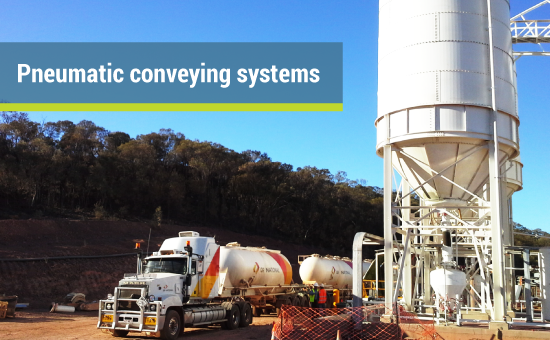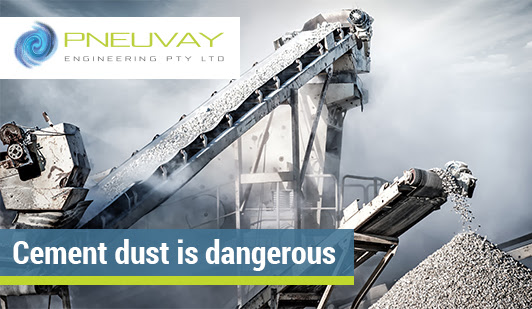Wednesday, August 17, 2016
Cement plant dust collector systems is a must for the concrete batching industry especially with the many processes it has to complete. This includes
- Measuring
- Storing
- Transferring of concrete constituents into the truck for transport
All of these process requires three major raw materials: sand, cement and water. This creates a considerable amount of dust in cement plants.
Cement plant dust collector in Glencore
How do you keep dust at a minimum in this industry? Read on to learn how cement plant dust collector systems can help you.
Environmental guidelines for the concrete batching industry
EPA Publications has published environmental guidelines for the concrete batching industry. This aims to:
- Keep sand and aggregates damp, as well as pavements and surfaces clean
- Fit cement silos with high level alarms, multi-bag pulse jet filters, airtight inspection hatches and automatic cut-off switches on the filler lines
- Keep duct work airtight and enclose the loading bay
- Develop and implement an inspection regime for all dust control components.
- Clean up spills immediately
Danger of over exposure to cement dust
In a study published online last April 20 in the
European Respiratory Journal, researcher Karl-Christian Nordby, MD, of the National Institute for Occupational health shared the following report,
"Our results found that declines in lung volume are consistently associated with increases in exposure to cement dust.
"More than half of the study population was exposed to dust levels that induced statistically significant excess lung function decline."
Cement dust collector for safety
Most of this is due to the inhalation of dust during cement production. Read the news report published in
Med Page Today last 24 April 2016,
"Long-term occupational exposure to cement dust is associated with an increased risk for lung function decline even at levels considered acceptable under occupational exposure limits, according to findings from a 4-year, follow-up study."
Potential sources of dust pollution in cement plants
The following are the potential sources of dust collection in cement plants:
- Delivery of raw materials in trucks, trailers and tankers
- Storage of raw materials in bunkers and stockpiles
- Transfer of raw materials by front end loaders, conveyors, hoppers and agitators
- Leakage or spillage of raw materials from silos, inspection covers and duct work
Benefits of good environmental
management practices for
concrete batching in cement plants
Industries, not only concrete batching, are encouraged to practice good environmental management as it reduces:
- Loss of materials
- Waste disposal costs
- Water and electricity costs
- Costs associated with complaints from the community
- Potential for litigation arising from pollution incidents
In addition to this, it also:
- Levels the playing field for pollution control across the industry
- Lowers spill clean-up costs
- Results to fewer disruptions to business operations
Specific guidelines have been published to help minimise dust in various areas of production for cement batching. However, we shall focus on silo and weigh hopper dust control recommendations.
Silo cement dust control recommendations
Cement dust emissions from the silo during filling operations can be minimised by using a fabric filter dust collector (FFDC) following these specifications:
Cement plant dust collector bags
and filter specification
It is important that the bags and filters used in your FFDC complies to the following:
- Correctly sized so that the dust collector bags are not subject to clogging
- Properly Installed with an appropriately sized multi-bag pulse jet filter in the silo
- Adequate cloth area of the filter for the displaced air volume
- Uses materials that can withstand continuous exposure to cement such as polyester and polypropylene
- Cleaned automatically at the end of the silo filling cycle
It is highly recommended that FFDC should be inspected routinely and any necessary repairs carried out immediately. This helps identify any potential problems before a leak or spill occurs.
This is a sample checklist published by www.epa.vic.gov.au.
Cement plant dust collector system checklist
Pneuvay Engineering supplies cement plant dust collector filters and bags to industries. We even maintain cement plant dust collector systems to ensure you periodically have these cleaned.
Learn more about it.
Technical specifications of cement plant dust collector systems for concrete batching
In addition to ensuring your using the right dust collector filters and bags for your system, it is important that your dust collection system can withstand the maximum pressure differential it may encounter. Thus the need to follow these technical specifications:
- Installation of positive type relief valves set at appropriate pressures and ducted to a dust collector container on the ground
- Visible exhaust discharge points which are monitored by the driver during silo filling operations
- Installed burst bag detectors, which are connected to the automatic silo overfill protection circuit to stop the flow of cement if a filter bag bursts, in all batching plants
Dust collection system standards
for weigh hoppers
Weigh hoppers used in factories, manufacturing facilities and workshops should be totally enclosed. This ensures dust cannot escape to the atmosphere. Nevertheless, it is of utmost importance that these be fitted with its own dedicated FFDC.
Cement plant dust collector for weigh hoppers
Do you want to ensure minimal dust exposure in your cement plant? Pneuvay Engineering can help design and install a cement plant dust collector system for you. Talk to us at 1300 721 458.
All News |
Back to Top





